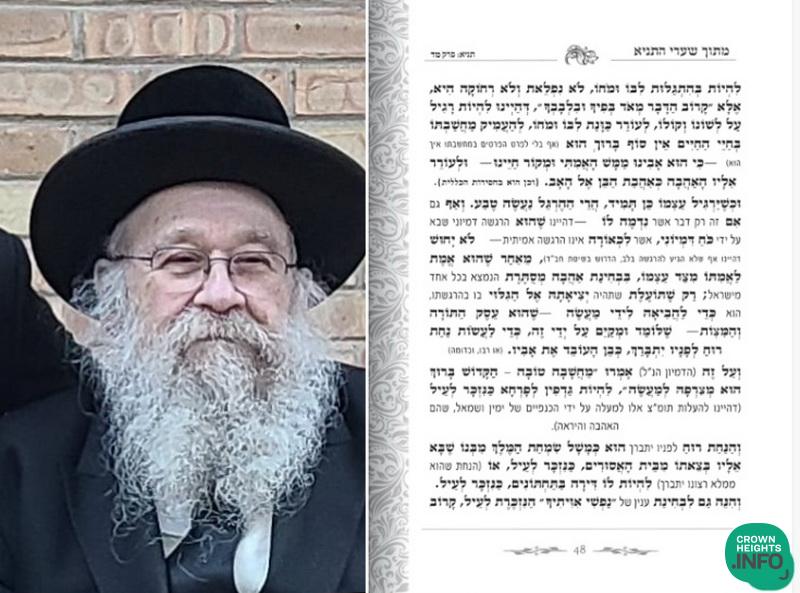
A New Sefer on Tanya Which Focuses on Clarity
This sefer, Shaarei HaTanya, is unlike the usual (or standard) print in that it presents Tanya in a clear, easy-to-read, and easy-to-understand manner. In this sefer, Tanya is presented with punctuation, vowels (nekudos), and paragraphs. It also has a flow of “inline” comments for clarification of the meaning.
These ”inline” comments are visually separated from the Tanya text by the contrast of a different typeface. The reading becomes very smooth, avoiding the need to hold one eye on the text and another on the pirush.
The book itself is a series of selected chapters of the Tanya that convey concepts in an order that suits the primary purpose of this production, (described below). However, it has also evolved into a sefer with much broader uses, such as:
⦁ For someone new to Tanya to study alone without the usual need for a mentor.
⦁ By a few beginners in a study group.
⦁ As a designated revision tool in schools where Tanya is taught at the higher levels.
So is the opinion of the author, Rabbi Mattis Kantor, whose acumen in curriculum development was recognized by a state education department and to whom the Rebbe once said, “Seeing that you are a mechanech with experience…”.
This sefer was initially intended to fill a need. Many frum yidden have become interested in the Chassidus of Tanya lately. Most, if not all, of those who are curious, could study it in the original Loshon HaKodesh. However, that isn’t enough to really gain full comprehension because there is a significant need to focus on breaking down the language in order to capture the meaning of a phrase and sometimes a paragraph. The phrases are in very brief language, omitting some words that would be self-evident to someone experienced in the subject matter. This results in language-related brainwork, eclipsing the clarity needed to grasp the overall content. Consequently, Tanya is virtually always studied with the aid of a mentor. In this book, the flow of comments inserted in the text (with the distinct typeface) is intended to create an easy, stand-alone, comprehensible read.
It is available online at Kehot-online, in many Jewish bookstores, or worldwide at large local general bookstores connected to Ingram.
The book needs to be seen in order to be appreciated properly, particularly the pleasant and practical page layout.
The leather-like cover is handsomely designed and has gilded edges, giving it a princely feeling, fit for a bar mitzvah gift.
The selection of chapters is based on the notion that Tanya contains two major themes. The first (and arguably the foremost) is the avoda, the service of Hashem, and how to approach it and then progress, which is the book’s primary focus. The second is to enlighten the spirituality within and around us in all dimensions. The selections in this book reflect the former and, therefore, begin with a practical first step, which is boldly stated at the beginning of Chapter 41. At the time of the initial release of Tanya, a focus on this first step was assumed to have been taken because it is part of the basic instructions in the Shulchan Aruch regarding attitude and behavior. Accordingly, the previous forty chapters primarily reflect the second theme, albeit there are many practical steps within those chapters. Similarly, concepts on much of the spiritual dimension also appear in the practical theme of the selected chapters in this sefer.
Accordingly, parts of Tanya can be viewed as a base layer reflecting the preexisting practical steps of avoda, a layer although essentially assumed (until reiterated in Chapter 41) and is the essentially the predominant theme of Mussar presented in a unique style. Then, over that, there is the added layer of the general Chassidus that the Baal Shem Tov revealed, also in a unique style. Additionally, there is the third layer of the Alter Rebbe’s Chabad derech, which surprisingly constitutes a small part of Tanya’s emphasis.
Each of each of these layers is flagged by a small comment as it (sporadically) appears in the text.












